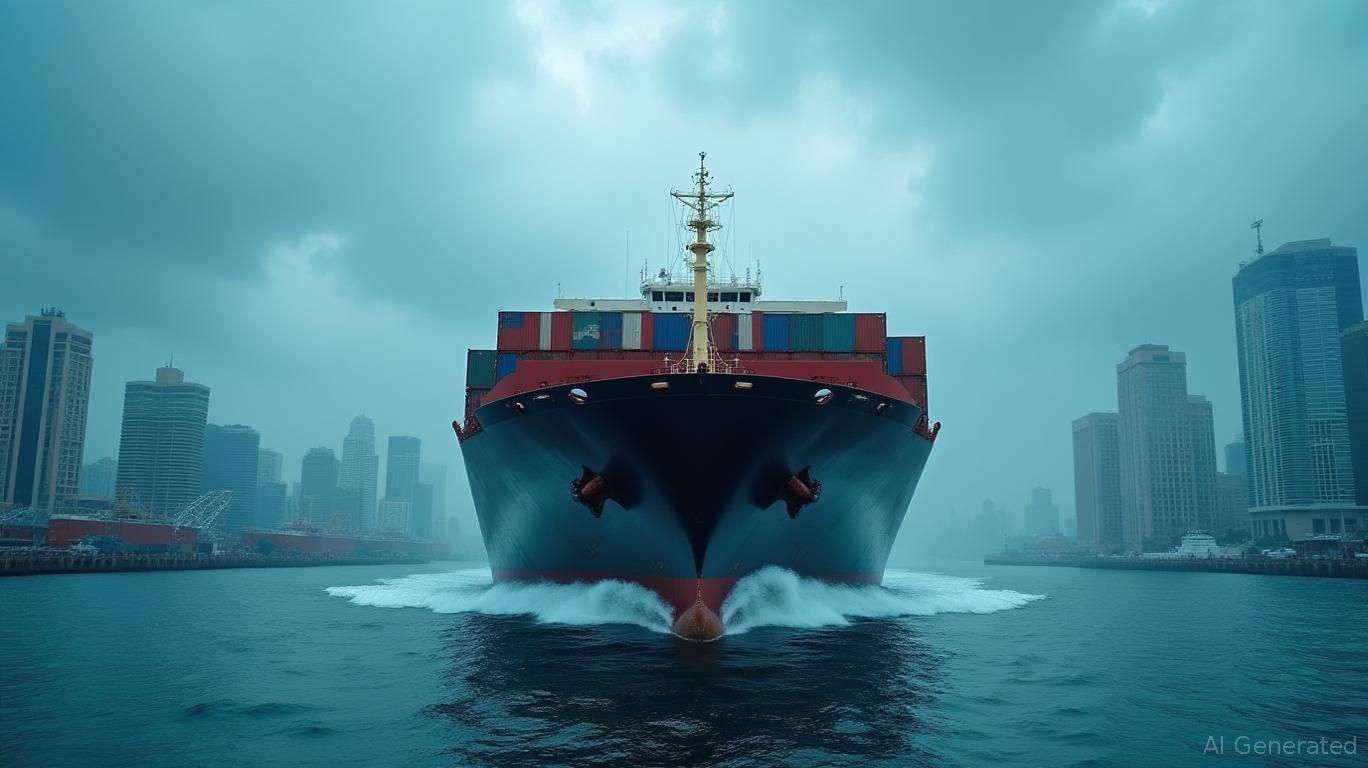Navigating the New Maritime Trade Landscape: U.S. Policy Adjustments and Investment Implications
The U.S. government’s recent revisions to its China maritime policy mark a pivotal shift in balancing national security imperatives with economic realities. After industry backlash over initial proposals that threatened to disrupt global supply chains, the USTR scaled back punitive port fees, opting instead for a nuanced approach. This article explores the implications for investors, highlighting opportunities and risks in shipping, ports, and U.S. maritime industries.
The Revised Policy: A Nuanced Approach to Maritime Trade
The USTR’s adjusted policy replaces blanket fees with a capacity-based structure, capping charges at $1.5 million for large Chinese-built ships while reducing burdens on smaller vessels. A refund mechanism for U.S.-flagged vessels—up to $1 million per port call—aims to incentivize domestic shipping. Meanwhile, a 10% "service fee" on cargo entering the U.S. via Canadian or Mexican ports seeks to prevent rerouting, though enforcement remains uncertain.

Economic Concerns and Cargo Diversion Risks
Industry groups, including the Promotional Products Association International (PPAI), warn of dire consequences. A Trade Partnership Worldwide study estimates the policies could slash U.S. GDP by $6.2 billion, driven by an 11% decline in port traffic and a 14% spike in shipping costs. Smaller firms face disproportionate strain: higher logistics costs could squeeze profit margins, while cargo diversion to Canadian ports like Vancouver or Mexican hubs like Lázaro Cárdenas may weaken U.S. port competitiveness.
Shipping giants like Maersk, which rely on efficient port operations, could see volatility as rerouting disrupts their networks. Investors should monitor stock performance alongside port traffic trends.
Legal Ambiguities and Capacity Constraints
The policy’s success hinges on resolving critical ambiguities. Terms like "Chinese-built vessels" lack precise definitions, risking unintended penalties for ships with minor Chinese components. Meanwhile, the U.S. cargo preference mandate—targeting 15% of exports on domestic vessels—faces skepticism. The U.S. shipbuilding sector’s limited capacity to produce large commercial ships, as seen in
Investment Opportunities and Risks
Ports in Canada/Mexico:
Cargo diversion could boost traffic at Canadian ports like Halifax or Mexican terminals. Investors might consider infrastructure funds or regional logistics firms exposed to these hubs.U.S. Flagged Shipping Firms:
The refund mechanism favors operators of American-flagged vessels. Companies like(though note: SeaSpine is unrelated—use a shipping-specific example like ) may benefit if they secure subsidies.stock code include sea(2)stock code include niche carriers(2)stock code include sea;stock code include niche carriers(2)last-pricelast-change%120.97 1.89% TickerSESea View 1 resultMaritime Technology and Compliance:
Third-party auditors and firms offering forced-labor verification services could see demand rise as shipowners scramble to meet exemption criteria.U.S. Shipbuilding:
While the cargo preference is risky, defense contractors like Huntington Ingalls (HII) might gain from renewed focus on naval capacity, though commercial shipbuilding remains a long shot.
Conclusion: A Delicate Balance Between Security and Profit
The USTR’s revised policy reflects a pragmatic response to industry concerns, but its success remains uncertain. While the capacity-based fees and refund system mitigate some risks, cargo diversion and GDP contraction loom large. Investors should prioritize sectors insulated from rerouting (e.g., Canadian/Mexican ports) and monitor geopolitical developments closely. The $6.2 billion GDP warning underscores the fragile trade-off between national security and economic health. For now, cautious capital allocation—focused on logistics flexibility and compliance services—seems prudent, with a watchful eye on how the U.S. shipbuilding sector adapts to unprecedented demands.
In the end, the maritime trade landscape of 2025 will be shaped not just by policy, but by the resilience of global supply chains and the ingenuity of investors navigating uncharted waters.










